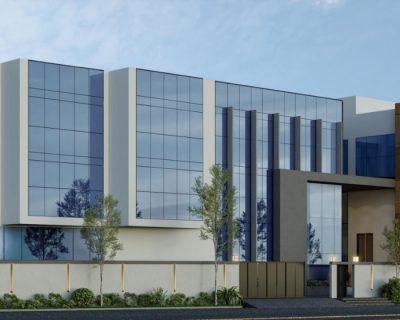Blog

Warehousing Industry: Expanding India’s Economy
The warehousing industry is a crucial element in the supply chain that ties the producer to the end customer. India’s warehousing business has developed over time, going from simple storage facilities to extremely complex warehouse and logistics operations. Due to shifting customer behavior, the industry has been growing continuously. According to a credible report, between FY 2021 and FY 2026, the total value of warehousing transactions for the eight primary market segments is expected to increase at a compound annual growth rate of 19%. Let’s analyze the facts and take a glance at how the growth of the warehousing industry transforms the Indian economy.
Is Warehousing Industry Really Booming?
During and after the pandemic, the warehousing and logistics industry has gained popularity because of the increasing transition of consumers towards online shopping, from optional commodities to essentials. Today’s consumers are habitual to quick & easy access to things, delivered to their doorsteps. This brought a huge boom in the e-commerce industry, where companies are ramping up supplies and upgrading facilities, thereby, driving the development of new and innovative warehouse spaces. The growing trend and preference for Grade-A warehouses by e-commerce and Hyper-Local On-demand logistics providers continued in FY22, with roughly 52% of their supplies in the 8 key markets coming from Grade-A warehousing facilities.
Driving Factors of the Growth of the Warehousing Industry
1. Development beyond Metro Cities:
A significant customer base is growing from tier II and III cities as a result of greater Internet access, the government’s drive for Digital India, rising levels of spare money, brand-conscious youth, and a thirst for upgraded living. As a result, businesses are restructuring their supply chains and relocating nearer to the centers of consumption. This need for in-city warehouses has encouraged manufacturers to expand beyond tier I cities and add storage capacity in tier II and III cities too.
2. Surge in E-commerce:
Due to e-commerce growth, massive fulfillment centers are replacing traditional warehouses and distribution hubs. Bigger warehouses also offer more room and the chance to automate processes to optimize operations and speed up turnaround times. Recently, India has seen cases of international e-commerce operations with space sizes ranging from more than 2 lakh sq. ft. to 1 million sq. ft. in tier 1 cities.
3. Third-party logistics (3PL):
3PL has also been a significant catalyst for the industrial and warehousing sector’s growth, besides e-commerce, making the largest contributions to overall net absorption. The market demand for 3PL is increasing as more and more industries, including FMCG, engineering, e-commerce, pharmaceuticals, and electronics, have started recognizing its benefits towards their expansion in the long run.
4. Government Support:
The Indian economy’s expansion, positive industry trends, and supportive government programs have persuaded global corporations to build or extend production centers in the country. India’s ambition to emerge as a global manufacturing hotspot has sparked the interest of international and domestic investors in the warehouse industry. The ‘Make in India’ campaign, the Model Tenancy Act, National Infrastructure Pipeline, and GatiShakti multi-modal connectivity plan, as well as, the systematic changes like GST implementation, tax breaks for FDI capital, and infrastructure development in the industry are other contributing factors for the incoming investments, as they represent the ongoing efforts by the Indian government towards attaining its vision of Indian Logistics & Warehouse Industry.
5. National Logistics Policy:
The recently released National Logistics Policy complements the PM Gati Shakti National Master Plan by offering a structure for establishing MMLPs (Multi-Modal Logistics Parks) in major markets to enhance quicker, last-mile connectivity to meet the consumer demand for prompt, online deliveries. On the other hand, the holistic and digital solutions will boost India’s reputation as a top manufacturing site in the world, all while making logistics more efficient.
Key Takeaways
Infrastructure has long been a crucial accelerator for boosting the financial status of countries around the world. India is undergoing an identical economic evolution. The warehousing and logistics industries would be the key players in helping India reach its goal of having a $5 trillion GDP by FY25. Given the current market tides and significant untapped potential, the warehousing industry is only expected to grow at a steady pace and eventually become a dominant part of India’s economic growth.




